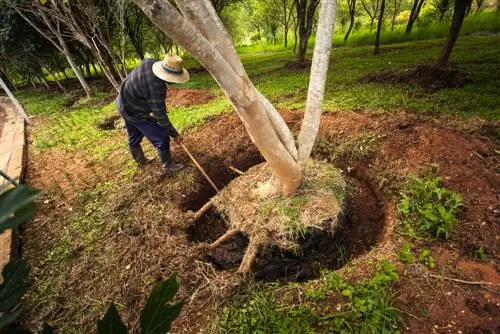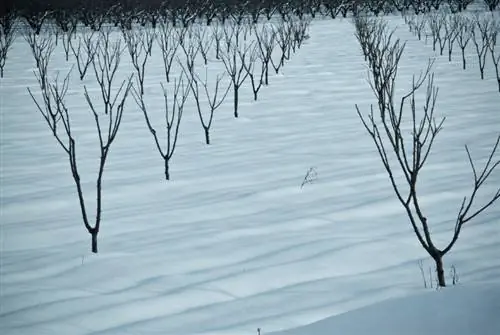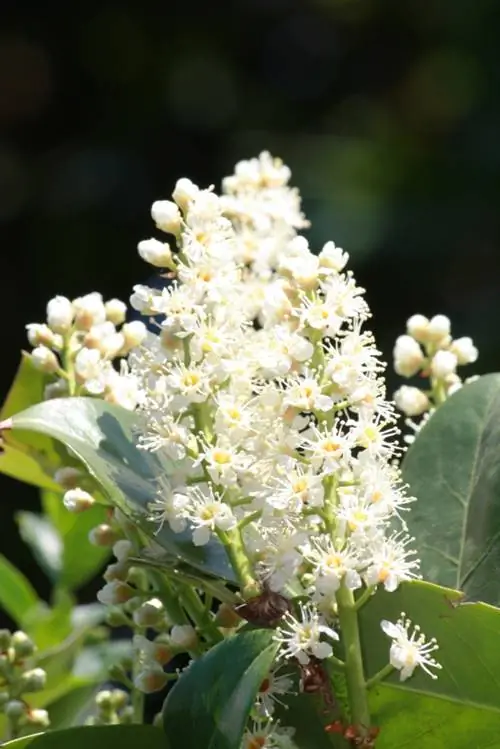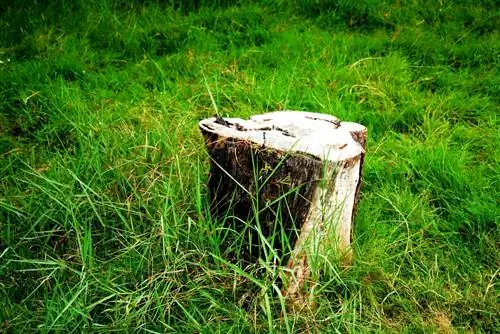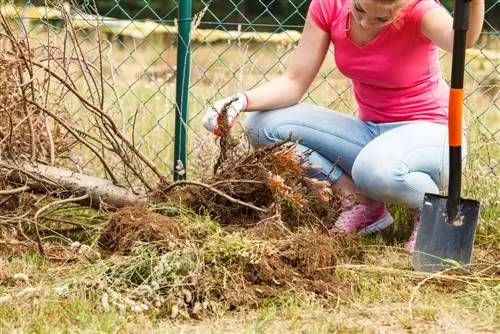- Author admin [email protected].
- Public 2023-12-16 16:46.
- Last modified 2025-01-23 11:21.
Sometimes there is no alternative to digging up the tree - be it because it has become too big, the garden needs to be redesigned or it is in danger of falling over due to a fungal disease. The best way to dig up the tree depends on whether you want to cut it down or move it. Transplanting, especially an older tree, is more complicated and requires more preparation.
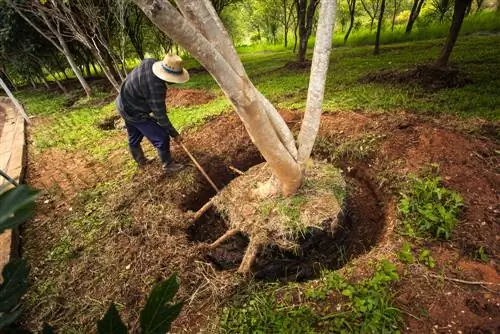
How do you properly dig up a tree?
To dig up a tree, dig a spade-deep trench around the tree in the fall and fill it with compost. Next year, loosen the roots and lift the tree out. Alternatively, cut down the tree and remove the stump.
Dig up and move the tree
If a tree is to be dug up and moved, you should dig a trench about spade deep around the tree disk in the fall of the previous year. The diameter should roughly correspond to that of the tree crown. Fill the narrow trench with compost and let the tree rest until the following fall. Only then do you dig the trench again and loosen the roots so that the tree can be lifted out. Depending on your age and size, you can accomplish this task using a spade, digging fork and another person or with heavy equipment.
Why digging the ditch last year makes sense
Particularly for tree species whose roots grow very wide and rather shallowly underground, cutting them by digging a trench makes sense. The following year the tree forms a compact root ball close to the trunk, whereby it develops numerous new fine roots. This compact root ball, in turn, makes it easier for it to grow in the new location later - which can be difficult with cut roots and without new fine roots. Nevertheless, every transplant also requires vigorous pruning, as the reduced root mass can no longer support the entire crown.
Remove tree stump
You can take less complicated action if the tree is to be felled anyway. In this case, cut off the crown and trunk piece by piece, depending on size and height, leaving about a meter of trunk - this will serve you well when removing the rootstock. However, you don't always have to remove the tree stump and roots from the ground - especially with very large trees, it can make sense to simply leave both in the ground. You can use the stump as a decorative element or support it in the rotting process through measures such as scoring with a chainsaw.
Tip
But be careful: Some tree species sprout again from cut stumps or the roots. Root cuttings can sometimes be found within several meters of the former trunk.

